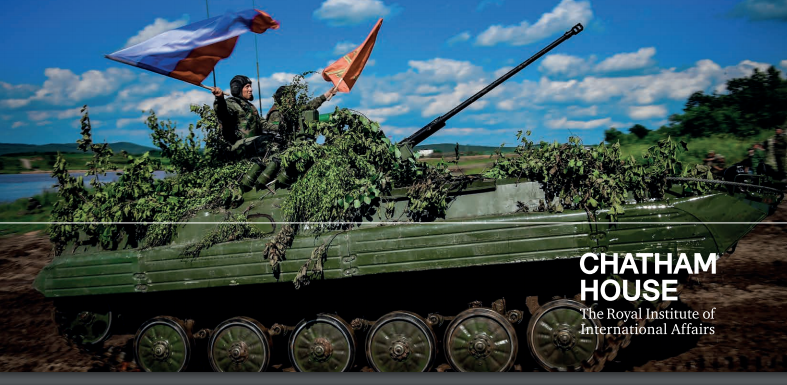Assessing the Russian Military Challenge: The Chatham House Perspective
Recently, Chatham House published an assessment of the way ahead for Russian military power and that assessment can be downloaded here:
The report makes the following key points:
The newly approved state armament programme (GPV 2027) will form the basis of Russia’s defence procurement and military priorities until 2027. It is expected to build on the progress made under the previous programme, GPV 2020, and further strengthen and modernize the Russian armed forces.
GPV 2020 helped revitalize sections of the Russian defence-industrial complex (OPK). New capital stock was installed, higher wages attracted younger and better-qualified workers, and production lines underwent a shift towards serial production of equipment for the first time in the post-Soviet era. This bodes well for GPV 2027. Some of the problems Russia encountered when developing and introducing weapons systems for GPV 2020 are likely to have been overcome by 2020. As a result, the defence industry looks set to start GPV 2027 from a much better position compared with where it started GPV 2020.
Over the next decade, the Ministry of Defence will be allocated the vast majority of around R19 trillion ($306 billion) for the procurement of military equipment, its modernization and repair, and research and development (R&D). Additional funds are likely to be allocated for investment in upgrading the defence industry’s production and storage infrastructure. The headline sum of R19 trillion is very close to that allocated to GPV 2020. However, as inflation has eroded the value of the rouble since 2011, the new programme is less ambitious than its predecessor in real terms.
Because GPV 2027 is effectively more limited in scope than GPV 2020, it is more likely that it will be fully funded. Even if the Russian economy grows at a modest annual average rate of only 2 per cent over the next decade, and even if the burden of defence spending is reduced to the historic post-Soviet average of 4 per cent of GDP, the authorities should at least come close to allocating the R19 trillion earmarked for GPV 2027.
Although the programme itself is classified, statements by senior officials from Russia’s military and defence-industrial establishment mean that it is possible to make out the probable future shape of the Russian military in the mid-2020s. GPV 2027 is likely to focus on force mobility and deployability, military logistics, and strengthening command-and-control (C2) systems. Additional emphasis is likely to be placed on the standardization and optimization of existing systems. GPV 2027 should allow the defence industry to streamline priority technological developments.
GPV 2027 will guide defence procurement and the modernization of the armed forces. The modernization of Russia’s strategic nuclear triad is expected to remain a priority. While the navy is likely to receive less funding and prioritize the acquisition of smaller vessels, the ground forces can expect a larger share of funding than before. Meanwhile, the country’s Aerospace Forces (VKS) will probably concentrate on filling existing gaps in procurement (especially with regard to transport aircraft), as well as on boosting power-projection capabilities and force mobility. Air defence systems, and the honing of deterrence and anti-access capabilities, will probably keep playing an important part in military planning.
Implementation of GPV 2027 will necessarily be affected by external and internal factors. Issues such as production capabilities, adaptation and technological development will continue to present challenges for the military industry throughout the 2020s.
Key external factors will include ‘lessons learned’ from operational combat experience in Ukraine and Syria since 2014, as well as negative impacts of targeted international sanctions on Russia’s defence sector and from the breakdown of military cooperation with Ukraine since 2014. Technological and tactical adaptations that have been developed to mitigate these challenges are expected to drive the implementation of GPV 2027.
Internal factors will include the struggle to modernize military equipment, the need to increase the effort around military R&D, and the existence of long-term, unresolved issues relating to the internal workings of the defence industry. These critical shortcomings are likely to remain in place throughout the implementation of GPV 2027.
By 2027, the Russian armed forces are likely to be considerably better equipped than they are today. Nevertheless, one should not overstate the pace of probable modernization. While some progress may be made in the development of new-generation equipment, the armed forces will probably still rely on a mix of legacy hardware and modernized Soviet systems alongside new designs. Providing Russia with 21st-century military capabilities and adapting its armed forces to today’s challenges will require sustained investment in modernization efforts and military R&D.

